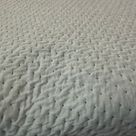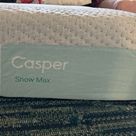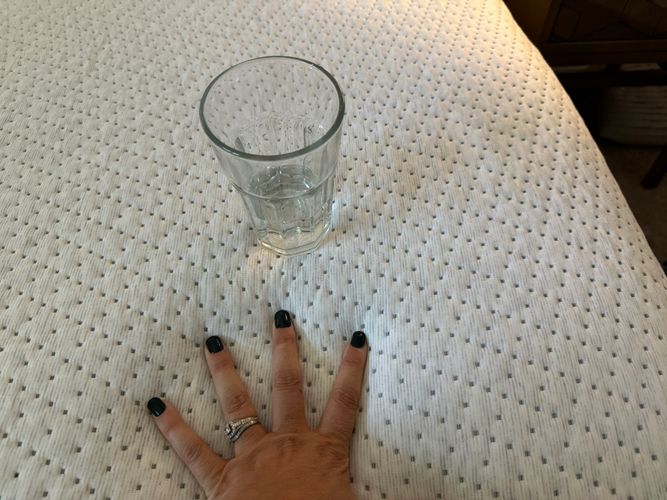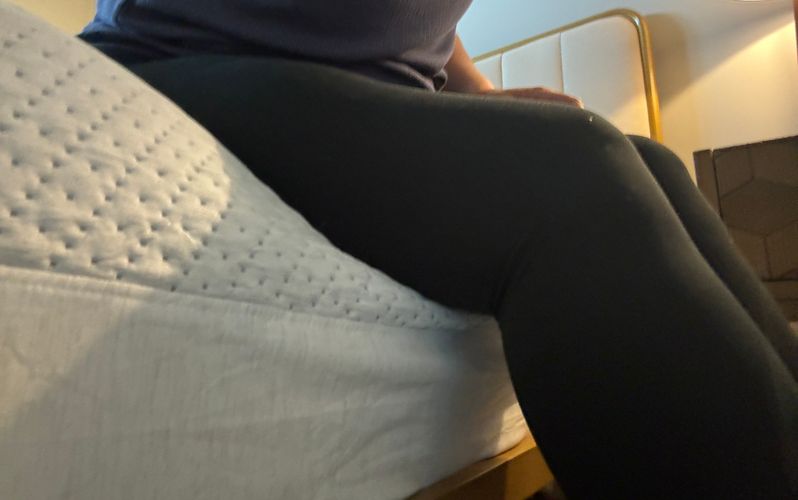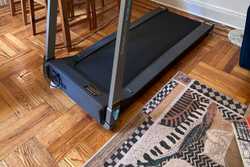Casper Snow Max Mattress Review: How Soft is Too Soft?
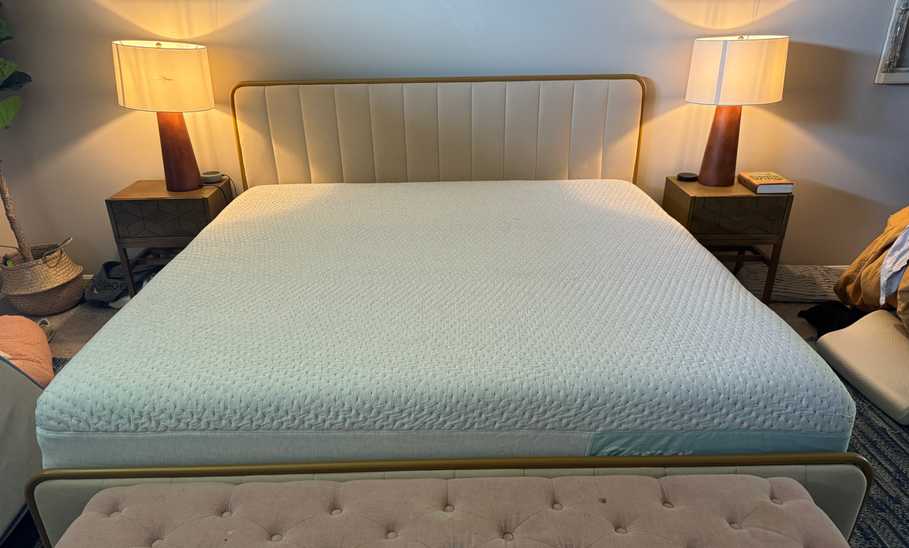
Our evaluations and opinions are not influenced by our advertising relationships, but we may earn a commission from our partners’ links. This content is created by TIME Stamped, under TIME’s direction and produced in accordance with TIME’s editorial guidelines and overseen by TIME’s editorial staff. Learn more about it.
When I sink into bed each night, I have certain expectations about just how much “sink” there should be. I want to achieve that super cozy feeling of fresh sheets and comfort—but also support—to ward off the aches and pains that are making me feel solidly in the middle of “middle age.” But finding that perfect mattress is a Goldilocks-type situation, including too soft and too hard, and in the case of memory foam, too much “sink” versus just enough.
That’s where the Casper Snow Max mattress comes in. This is an exceptionally smooshy mattress, with a whole lot of sink. Just when I thought my body had made its final impression in the memory foam, it just kept going down. For some, this might be a welcome reprieve from stiff beds and sore hips, backs, and other joints because of it. But for me, it proved to be insufficient support, and a little too much, well, mush.

Here’s what I found out after sleeping on the Casper Snow Max mattress, along with my husband, for multiple weeks.
Based on my experience as well as consumer reviews, there are a few pros and cons to keep in mind when deciding if this is the mattress for you.
Prices vary based on the size of the mattress and are accurate on time of publication. This specific mattress ranges in size from Twin XL to a Split King. Prices are as follows:
The prices are comparable to other similar beds, and some consumers have shared that this bed feels a bit more luxurious than others at a similar price point.

The mattress is made with seven various layers, including a top cooling layer, a zoned memory foam, and a polyurethane layer with encased springs. You can choose between the “Dream Max” option, which is just under $400 cheaper, or the “Snow Max” which is more expensive, but adds that element of cooling memory foam.
The design is meant to help hot sleepers maintain optimal temperature, which I found to be true throughout the night. In addition, it’s supposed to help you improve spinal alignment. For me, it made it worse, and my back was usually upset in the mornings I used this mattress. As someone with chronic back pain, I felt that it did align my back if I stayed still, but I was thrashing around a lot more than usual trying to get comfortable, causing additional strain.
Casper identifies this mattress as a medium soft in terms of firmness. The mattress has a serious amount of “sink” at first, and then once you settle in, it feels more like you are on a traditional spring mattress. So, if you don’t want to feel like you are sinking so far into the memory foam that it is essentially nonexistent, this might not be for you.
I personally felt the classification of “medium soft” is a bit of an exaggeration—I found it to be very soft, and in fact too soft to really have enough support. If you are someone who needs a firm mattress to sleep well, I’d avoid this option.
The memory foam is exceptionally comfortable, and you do feel like you are floating on a cloud to some extent. In that way, the bed is quite comfortable, and would make the best napping place ever. But, after spending hours in the bed, I found myself much more sore than usual, as I wasn’t getting the support as I did from my typical mattress which is a bit firmer.
However, those with all over joint pain might find the memory foam feel to alleviate some of their issues, if pressure is more of an issue than perfect alignment.
Consumers considering this mattress likely want to know how well it performs when it comes to fulfilling its claims of helping you fall asleep, stay asleep, and wake up cool and rested. Many reviewers point to the mattress as a relief in the summer, or from other conditions that made them sweaty at night. So in this way, it will likely cool you down even though that seems contradictory to sinking into memory foam — they got this part right.
Of course when it comes to performance, I’m not seeing the spinal alignment to be as high performing as promised, and I didn’t feel too much support from the “supportive springs” underneath the foam.
All mattresses are shipped from Casper for free and provide no-contact delivery. Additional shipping charges are in effect for customers in Alaska and Hawaii.
There were no issues with delivery or set up, and the team was willing to carry the mattress up a flight of stairs, and my only job was to unwrap the plastic wrap and position the mattress where I wanted it before use. The initial unpackaging process revealed a fluffy, clean, and ready to use mattress, even though Casper says that the Snow mattresses can take up to 72 hours to fully expand. The entire process was smooth.
Determining if this mattress is a fit for you involves a few key considerations:
Sleepers that tend to sleep hot or toss and turn a lot may find the Casper Snow Max Mattress an ideal fit. It is cooling throughout the night, not just when you first lay down, which is an issue with some brands.
I recommend this mattress for people with painful joints, who need the “floating” or “sinking” type of relief that memory foam can provide. However, for those with sciatic issues, spinal concerns, or related aches and pains, I didn’t find this to perform as well as sturdier options.
While the brand promotes the mattress as ideal for all sleep styles, as a combination sleeper myself, I didn’t find that to be true. When I slept on my stomach on this mattress, I ended up with more of an arch in my back than with other mattresses, causing misalignment. Side sleeping with a pillow under my knees was the closest position to spinal alignment I had using this, and did reduce pain in the hip joint that I was laying on.
This mattress doesn’t have strong edge support, so if you are sitting on the edge of the bed, you will likely slide down. In fact, when my dog hopped up to try the mattress, settling on the edge of it, that’s exactly what happened—much to his surprise.
The Casper Snow Max mattress boasts 12+ hours of cooler sleep. With its Snow Technology, it claims to attack overheating from every angle. Its Zone Support is designed to help support and align your back, waist and hips, though that wasn’t my experience.
The mattress does offer more luxurious feeling fabric and memory foam than some other options, which could be attractive to someone looking to spend less than other brands for 14-inch “ultra supportive” foam and responsive coils.
Casper mattresses offer a variety of mattresses, including their “bestseller” called “The One,” which is categorized as “medium firm” along with hybrid mattresses and the “maxes,” both of which were discussed here. Here’s how to tell which is for you:
The One: This gives a bit of bounce, according to Casper, but isn’t as involved and “premium” as the memory foam offered in other hybrids and the “maxes” line. This is more of a budget buy, with queen mattresses on sale for $799.
The Hybrids: This is a more “premium” sleep option, also available with the all night “snow” cooling feature. They have layers of foam and feature three zones of support. A queen Hybrid is around $1300, making it the middle option in their line up, below the “maxes.”
I personally didn’t find this Casper mattress to improve back pain. In fact, I was more sore in the mornings when I woke up, from attempting to sleep on my stomach and ending up slightly arched.
Yes, they offer a 100-night, risk free sleep trial. This is especially important for subjective product descriptions such as determining what “medium soft” means to you, and if it works for your needs.
Yes, the snow function is the main feature in this mattress that I found most beneficial. So, for those who run a bit hot when they sleep, it’s worth the few hundred dollars to add it on. For others who don’t run hot, and prefer to be cozy and tucked in, including sinking down into memory foam, it might not be necessary.
The mattress is very squishy, allowing for quite a bit of sinking into the memory foam. This is ideal for some people who like a softer mattress, but won’t prove supportive for others.

The information presented here is created by TIME Stamped and overseen by TIME editorial staff. To learn more, see our About Us page.


